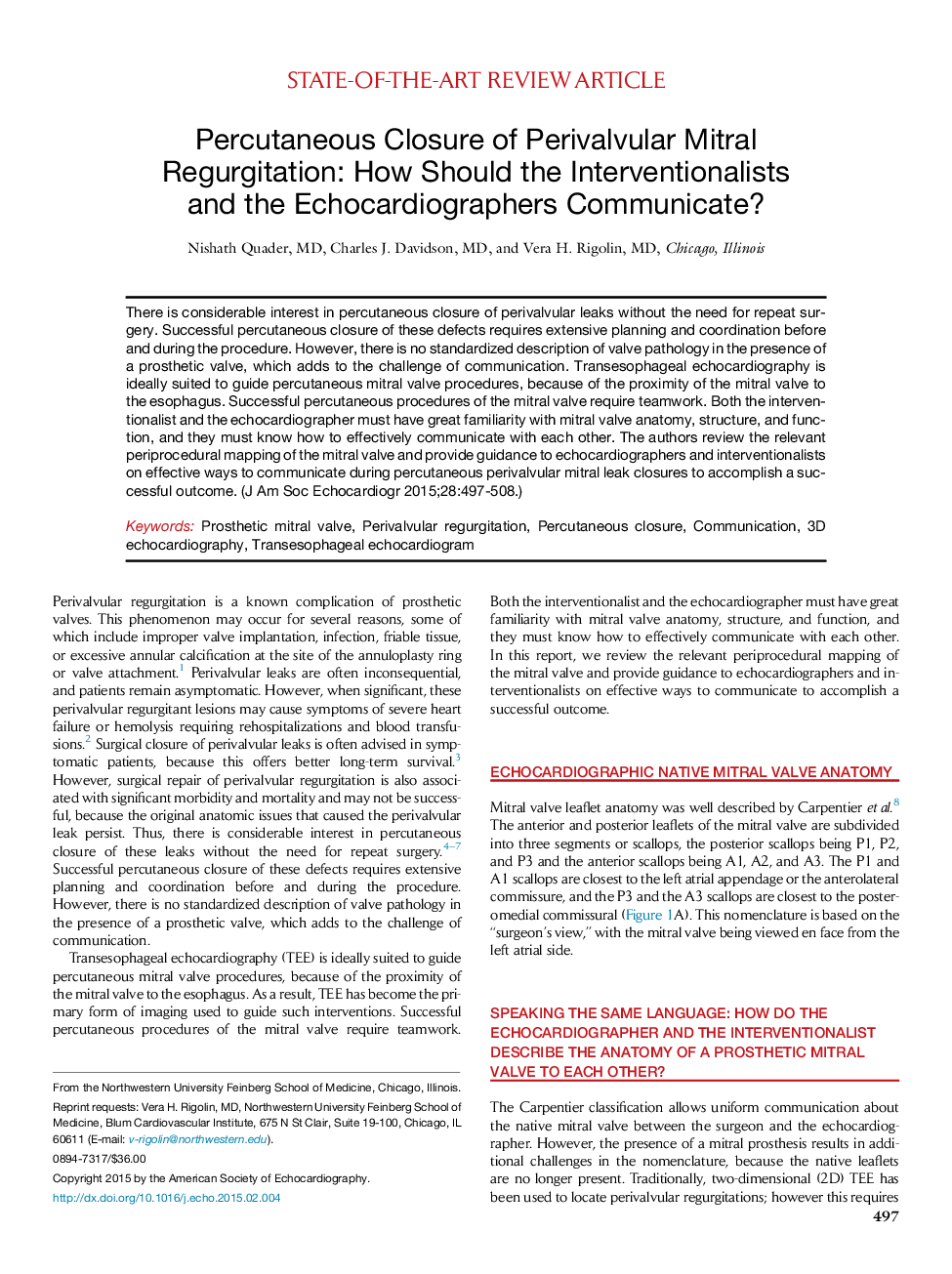| Article ID | Journal | Published Year | Pages | File Type |
|---|---|---|---|---|
| 5612303 | Journal of the American Society of Echocardiography | 2015 | 12 Pages |
Abstract
There is considerable interest in percutaneous closure of perivalvular leaks without the need for repeat surgery. Successful percutaneous closure of these defects requires extensive planning and coordination before and during the procedure. However, there is no standardized description of valve pathology in the presence of a prosthetic valve, which adds to the challenge of communication. Transesophageal echocardiography is ideally suited to guide percutaneous mitral valve procedures, because of the proximity of the mitral valve to the esophagus. Successful percutaneous procedures of the mitral valve require teamwork. Both the interventionalist and the echocardiographer must have great familiarity with mitral valve anatomy, structure, and function, and they must know how to effectively communicate with each other. The authors review the relevant periprocedural mapping of the mitral valve and provide guidance to echocardiographers and interventionalists on effective ways to communicate during percutaneous perivalvular mitral leak closures to accomplish a successful outcome.
Keywords
Related Topics
Health Sciences
Medicine and Dentistry
Cardiology and Cardiovascular Medicine
Authors
Nishath MD, Charles J. MD, Vera H. MD,
